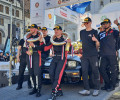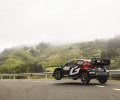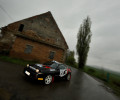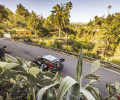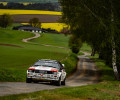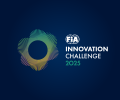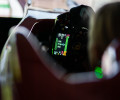2013 Australian Grand Prix - Preview
11.03.13

|
|
|
|
|
Race Preview |
||
|
2013 AUSTRALIAN GRAND PRIX 15-17 MARCH 2013 |
||
|
Once again Melbourne extends its welcome to Formula One as Albert Park prepares to host the Australian Grand Prix – the opening race of the 2013 FIA Formula One World Championship. Sixteen weeks after storm-lashed Interlagos and the drama-laden climax of the 2012 season, the teams reassemble for what is widely expected to be an incredibly close year of racing. Stability in the technical regulations leads to a great deal of carryover from 2012 and, several notable exceptions aside, optimising existing designs has been the primary focus in the development of 2013 cars. While the machinery has a familiar look, the same cannot be said for the driver line-up. Four of 2012’s field have switched teams in the off-season and five rookies will be making their F1 race debut in this weekend. Albert Park is not the easiest place to make a good impression. Running on public roads through the park, the temporary circuit has a reputation for being slippery with several large bumps known to destabilise cars under braking. Gravel traps wait for the unwary and the unlucky – but being a street circuit there are also plenty of walls. Added to the limited and hazardous nature of overtaking opportunities at Albert Park, it means the safety car is often busy at the Australian Grand Prix. Another variable to factor in are the new tyres on offer from Pirelli. Reports from winter testing suggest teams are not yet fully on terms with the revised compounds, raising the possibility of early races this year seeing shorter stints (and thus more frequent pitstops) than was usual in 2012. As ever, winter testing did not provide any reliable evidence of a pecking order but did greatly add to the stock of speculation. Consensus points to a very tight battle ahead but without any hard evidence, this weekend will provide the first real indication of how the 2013 FIA Formula One World Championship will unfold. |
 |
|
|
CIRCUIT DATA ALBERT PARK CIRCUIT Length of lap: 5.303km Lap record 1:25.125 (Michael Schumacher, Ferrari, 2004) Start line/finish line offset 0.000km Total number of race laps 58 Total race distance 307.574km Pitlane speed limits 60km/h in practice; 100km/h in qualifying and race CHANGES TO THE CIRCUIT SINCE 2012 ► Kerbs on the exit of turns 14 and 16, which had subsided prior to last year’s race, have been repaired. ► Shade cloth will be used again, installed behind the debris fence in the section of track between turns two and three. |
||
|
|
||
 |
||
|
|
||
|
Australian GP Fast Facts |
||
|
► This will be the 29th F1 World Championship running of the Australian Grand Prix. It is the 18th consecutive year of the race being run at Albert Park, 16 of which have opened the Formula One season. ► In 1996, when the race moved to Albert Park, it produced the oddity of Australia hosting back-to-back grands prix, the closing race of 1995 having taken place at Adelaide. ► Albert Park is a temporary circuit with parts of the track used by general road traffic for the majority of the year. As such, it features unusually high grip-evolution (and thus falling laptimes) over the course of the weekend, as the track ‘rubbers-in’. ► In common with Abu Dhabi, the Australian Grand Prix has a local start time of 5pm. Unlike the event at Yas Island, this race finishes in daylight – but the low angle of the sun and the lengthening shadows have been known to make the latter stages of the race difficult for drivers. |
► Another perennial problem in tree-lined Albert Park is leaves and twigs being sucked into car radiators. ► Of the current grid, Jenson Button is the standout performer, having won three times in the last four years. It leaves him one victory short of equalling Michael Schumacher’s F1-era record. Schumacher won the race in 2000, ’01, ’02, ’04. ► On 11 occasions from 17 starts, the winning driver at Albert Park has gone on to lift the Drivers’ Championship trophy at the end of the season. ► The race winner has started on pole eight times at Albert Park. The lowest starter to win was Eddie Irvine, who started 11th for Ferrari in 1999. ► Four drivers start this race for new teams, having moved during the off-season. Lewis Hamilton has moved from McLaren to Mercedes; Sergio Pérez from Sauber to McLaren; Nico Hülkenberg from Force India to Sauber and Charles Pic from Marussia to Caterham. Also, Adrian Sutil is beginning his second stint with Force India. |
► Five rookies will contest the Australian Grand Prix: Esteban Gutiérrez (Sauber); Valtteri Bottas (Williams); Giedo van der Garde (Caterham); Max Chilton and Jules Bianchi (Marussia). ► Reigning GP2 Champion Davide Valsecchi is not among the rookie intake. He instead has signed as a test driver for Lotus in 2013. The only other GP2 champion to not move directly into an F1 race seat was 2008 winner Giorgio Pantano – who raced in F1 before going to GP2. ► Giedo van der Garde ends a barren spell for Dutch representation in Formula One. The Netherlands hasn’t had a driver in the Championship since Christijan Albers raced for Spyker for the first half of the 2007 season. ► The demise of HRT returns F1 to a 22-car grid for the first time since the opening rounds of 2008. During that season the withdrawal of Super Aguri after four rounds reduced it to 20. It expanded to 24 in 2010. |
|
|
||
|
Australian GP Race Stewards Biographies |
||
|
PAUL GUTJAHR PRESIDENT OF THE FIA HILL CLIMB COMMISSION, BOARD MEMBER AND PRESIDENT OF AUTO SPORT SUISSE SARL |
 |
|
| Paul Gutjahr started racing in the late 1960s with Alfa Romeo, Lancia, Lotus and Porsche, then March in Formula 3. In the early ’70s he became President of the Automobile Club Berne and organised numerous events. He acted as President of the organising committee of the Swiss GP at Dijon between 1980-82. Between 1980-2005 he acted as President of the Commission Sportive Nationale de l’Automobile Club de Suisse and in 2005 he became President and board member of the Auto Sport Suisse motor sports club. Gutjahr is President of the Alliance of European Hill Climb Organisers and has been a steward at various high-level international competitions. He was the Formula 3000 Sporting Commissioner and has been a Formula One steward since 1995. | ||
|
|
||
|
VINCENZO SPANO PRESIDENT OF THE SPORTING COMMISSION OF THE AUTOMOBILE AND TOURING CLUB OF VENEZUELA |
 |
|
| Italian-born Vincenzo Spano grew up in Venezuela, where he went on to study at the Universidad Central de Venezuela, becoming an attorney-at-law. Spano has wide-ranging experience in motor sport, from national to international level. He has worked for the Touring y Automóvil Club de Venezuela since 1991, and served as President of the Sporting Commission since 2001. He was president for two terms and now sits as a member of the Board of the Nacam-FIA zone. Since 1995 Spano has been a licenced steward and obtained his FIA steward superlicence in 2003.Spano has been involved with the FIA and FIA Institute in various roles since 2001: a member of the World Motor Sport Council, the FIA Committee, and the executive committee of the FIA Institute. | ||
|
|
||
|
DANNY SULLIVAN FORMER F1 DRIVER, INDIANAPOLIS 500 WINNER AND CART CHAMPION |
 |
|
| US racer Danny Sullivan made his F1 debut with Tyrrell at the 1983 Brazilian Grand Prix. He raced just one season in F1, scoring a best result of fifth in Monaco. In 1984, Sullivan returned to the US where he resumed a successful Indy Car career. He is perhaps best known for his ‘spin and win’ victory at the 1985 Indianapolis 500, where he passed leader Mario Andretti, survived a 360 degree spin, and then caught and re-passed Andretti to claim the Borg-Warner Trophy. He won the Indy Car World Series title in 1988. After 17 victories from 170 Indy Car starts he drew a line under his open-wheel career in 1995. He finished third in the Le Mans 24 Hours in a Dauer Porsche 962 in 1994. He made four starts at Le Mans, the most recent being 2004. | ||
|
|
||
|
Australian GP Formula One Timetable & FIA Media Schedule |
||
|
|
||
|
THURSDAY Press Conference FRIDAY Practice Session 1 Practice Session 2 Press Conference SATURDAY Practice Session 3 Qualifying Followed by unilateral and press conference SUNDAY Drivers' Parade Race Followed by unilateral and press conference |
15.00 12.30-14.00 16.30-18.00 18.30 14.00-15.00 17.00-18.00 15.30 17.00-19.00 |
|
|
|
||
| ADDITIONAL MEDIA OPPORTUNITIES | ||
|
QUALIFYING All drivers eliminated in Q1 or Q2 are available for media interviews immediately after the end of each session, as are drivers who participated in Q3, but who are not required for the post-qualifying press conference. Where? Through the paddock entrance, first grassed area on the left next to the fountain. RACE Any driver retiring before the end of the race will be made available at his team’s garage/hospitality. In addition, during the race every team will make available at least one senior spokesperson for interview by officially accredited TV crews. A list of those nominated will be made available in the media centre. |
||

 Facebook
Facebook Twitter
Twitter